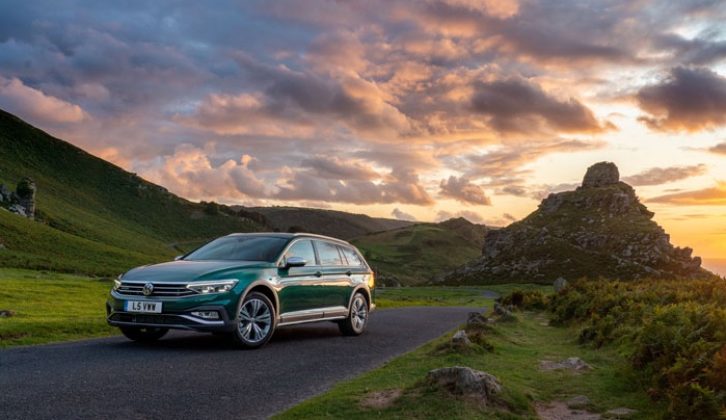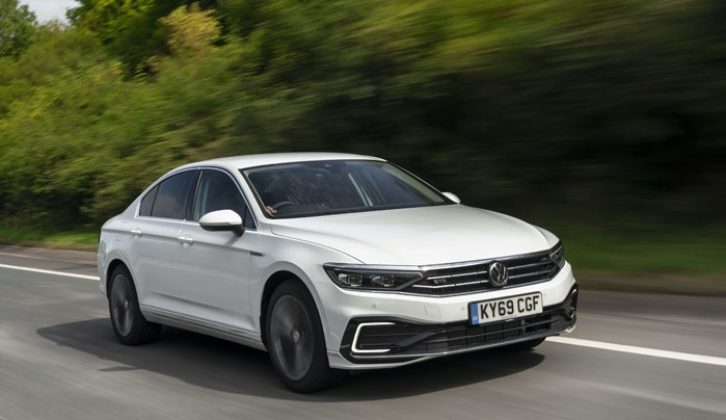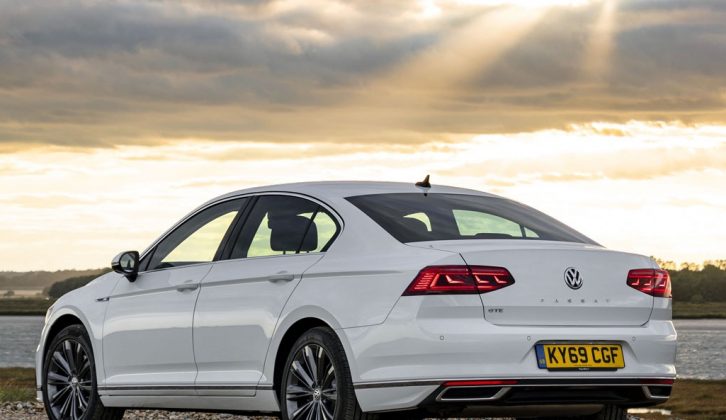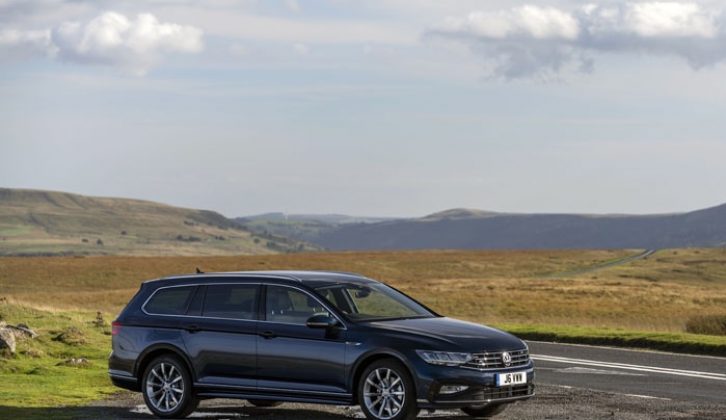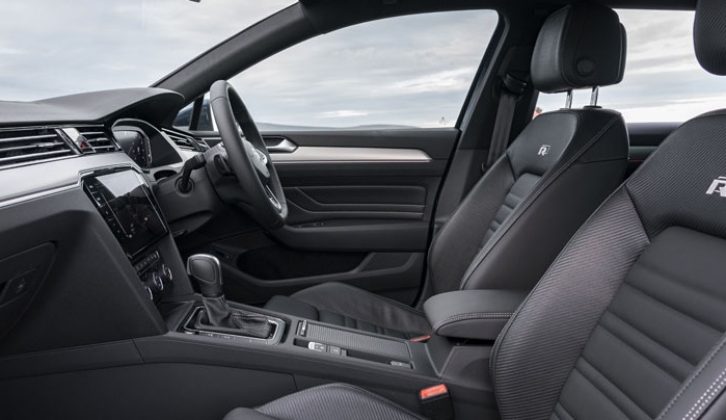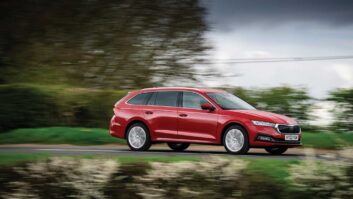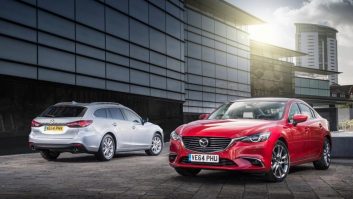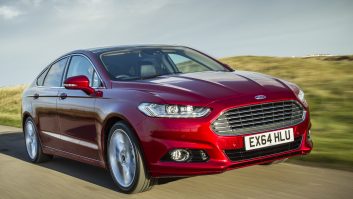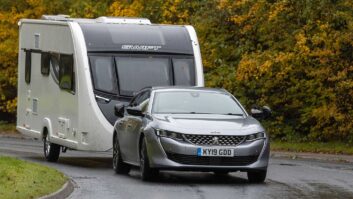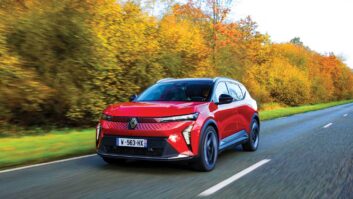Volkswagen isn’t in the habit of fixing things that aren’t broken. Take the new Passat. A facelift rather than an all-new car, you’ll need to be a true VW spotter to notice the differences on the outside. But the revisions are more significant than they might first appear.
Reintroducing the GTE plug-in hybrid
Perhaps the most interesting is the reintroduction of the GTE plug-in hybrid version. Volkswagen couldn’t keep up with demand for the old model, and it was withdrawn from sale while the company coped with the backlog of orders.
This time around VW is confident it can deal with demand, and expects a quarter of all Passats sold in the UK to be plug-in hybrids.
And you know what, our brief test drive suggests that confidence should be justified. The GTE has a 1.4 TSI petrol engine with 156hp, and an electric motor with 115hp. The maximum combined output is 218hp (it’s not as simple as adding the two outputs together, as the engine and motor can’t deliver peak power at the same time).
The result is a quiet and deceptively quick car. Even under hard acceleration, there’s far less engine noise than you’d put up with in a Mitsubishi Outlander PHEV. What’s even more impressive is the smooth way the GTE slips from using electric power to employing the engine as well and back again. There’s not the slightest jolt, just seemless motion.
There are various modes to tinker with. Press the GTE button and performance is the priority, although economy and range will suffer. In the hybrid setting the car efficiently manages both sources of power, whereas in E-mode the car will drive on electric power alone. VW says the car can reach 87mph using the electric motor, although clearly not if you plan to stay the right side of the law.
A new, higher capacity battery has increased the car’s all-electric range to 34 miles on the WLTP cycle, and 43 miles using the older NEDC test. The previous model could travel 31 miles as an electric car, according to the NEDC standard.
As with any plug-in hybrid, fuel economy figures will depend on how far you drive, and how often you can recharge the car’s batteries. The WLTP official combined figure for the saloon is 201.7mpg. We saw closer to 50mpg, although the battery was only around a quarter charged when our test drive started.
Optimism as a tow car
Low-speed punch from the electric motor together with top-end power from the petrol engine lead us to be optimistic about the GTE’s towing credentials. It certainly feels strong enough to handle a carefully matched tourer. The saloon we drove (there’s also an estate version) has a kerbweight of 1730kg, giving an 85% match figure of 1471kg. Working from the gross weights on the VIN plate, the car has a legal towing limit of 1645kg.
Another reason to think the GTE will be well suited to caravan holidays is the clever packaging of the electric components, which hardly compromises practicality at all. Boot space is still generous, with 580 litres if you opt for the estate (the regular Passat Estate has a 650-litre capacity). You do lose room for a spare wheel, though, which could be a deal-breaker for some.
A murmuring diesel
Choose a diesel, and a space-saver spare is standard on most versions. There are four engines to choose from, ranging from 120hp to 240hp. The most technically intriguing is the new 2.0 TDI 150hp Evo engine, which can switch from four cylinders to two to save fuel.
Although the new engine wasn’t available for us to try, we did drive two Passats with the 190hp 2.0 TDI. Although the tell-tale grumble leaves you in no doubt this is a diesel engine, the noise fades to a murmur once up to speed, and there’s plenty of pulling power.
We drove a front-wheel-drive R-Line estate, with a kerbweight of 1600kg. The car came with adaptive suspension damping, an £895 option. We found the sport setting a little too firm for poorly maintained British roads. Comfort mode was preferable, although the well balanced Normal setting kept the car more tightly controlled and would probably be the best choice for stable towing.
For its higher kerbweight and the traction benefits of four-wheel drive, it’s worth considering the Alltrack model. Based on the regular estate but with a raised ride height, the Alltrack has a kerbweight of 1725kg, giving an 85% match figure of 1466kg. We found the Alltrack rode more comfortably than the R-Line, although its SUV-lite talents do come at a price: with the 190PS engine and a seven-speed DSG auto, the Alltrack costs £39,185.
The range starts from £25,370 for the 150hp 1.5-litre TSI SE saloon, rising to £45,050 for the 240hp 2.0 BiTDI 4Motion Estate. All models benefit from uprated tech, including the Travel Assist system which combines Adaptive Cruise Control and Lane Assist to deliver partially automated driving in certain circumstances.
We’d be very tempted by the GTE Estate, priced from £37,920. In fact, we’ve arrange a full tow test, so we’ll find out how well it tows.
Keep an eye out for it in a future issue of the magazine, or subscribe to get it delivered to your door.
Low-speed punch from the electric motor together with top-end power from the petrol engine lead us to be optimistic about the GTE's towing credentials. It certainly feels strong enough to handle a carefully matched tourer
